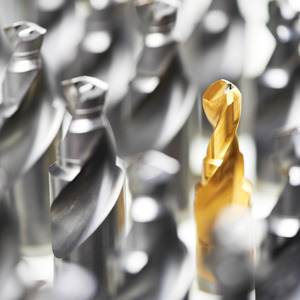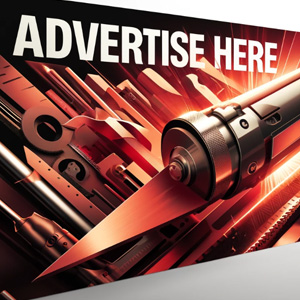Triumph Tool's Carbide Tipped Band Saw Blades Offer Longer Life and Faster Cutting
Triumph Tool Ltd, brings forward the types and benefits of carbide tipped band saw blades. Lenox, a Division of Stanley Black & Decker, is its Supplier Partner for band saw blades. These blades are of three types, carbon, bi-metal, and carbide tipped. ‘Carbon blades’ consist of carbon steel and have induction hardened teeth; their use in modern operations is minimal.
‘Bi-metal blades’ are made with two different types of metals. The blade backing is from a flexible spring steel that enables the blade to bend and flex during use. A high-speed steel wire is electron-beam welded onto the blade backing, which the teeth of the blade are milled into, providing cutting edge durability and longer blade life compared to a carbon blade.

The backing for ‘carbide tipped blades’ is made of a flexible spring steel. The teeth pockets are milled into the backing material, and the carbide tip is brazed into the pockets and finish ground. The carbide tip is stronger, making it durable and can stand more heat, outperforming the previous blades, it is best suited for use in solid materials because the continuous cut faces fewer vibrations than when cutting structural or thin wall tubing.
Carbide blades can be segregated into four basic categories. Firstly, ‘General Purpose’ which is recommended for cutting operations that frequently change the materials being cut. Second, ‘Hard-to-Cut Metals’ blades tailored for aerospace alloys containing high amounts of nickel, such as stainless steel and Inconel. Thirdly, ‘Extreme Performance’ coated carbide blades help transfer the heat from the cutting edge of the blade to the chips, cut faster and provide much longer blade life. Lastly, ‘Specialty’ blades have been crafted with specific cutting operations in mind.
In order to get the most of a carbide tipped blade which can be run on a wide variety of saws, the band saw machine, the operator (to keep the machine in optimum condition), and the operating costs, are the key components to consider. To maximize the output of the carbide blade on the machine, more rigid saw (to prevent vibration), elevated band speeds, and well maintenance (help prevent premature failure) are the key elements. Finally, reducing cutting times directly affects the use of overhead in making the cut. This can be seen particularly in hard-to-cut materials, using a carbide tipped blade with higher speed and feed rate can reduce the cost per cut when compared to bi-metal.
www.triumphtool.com











